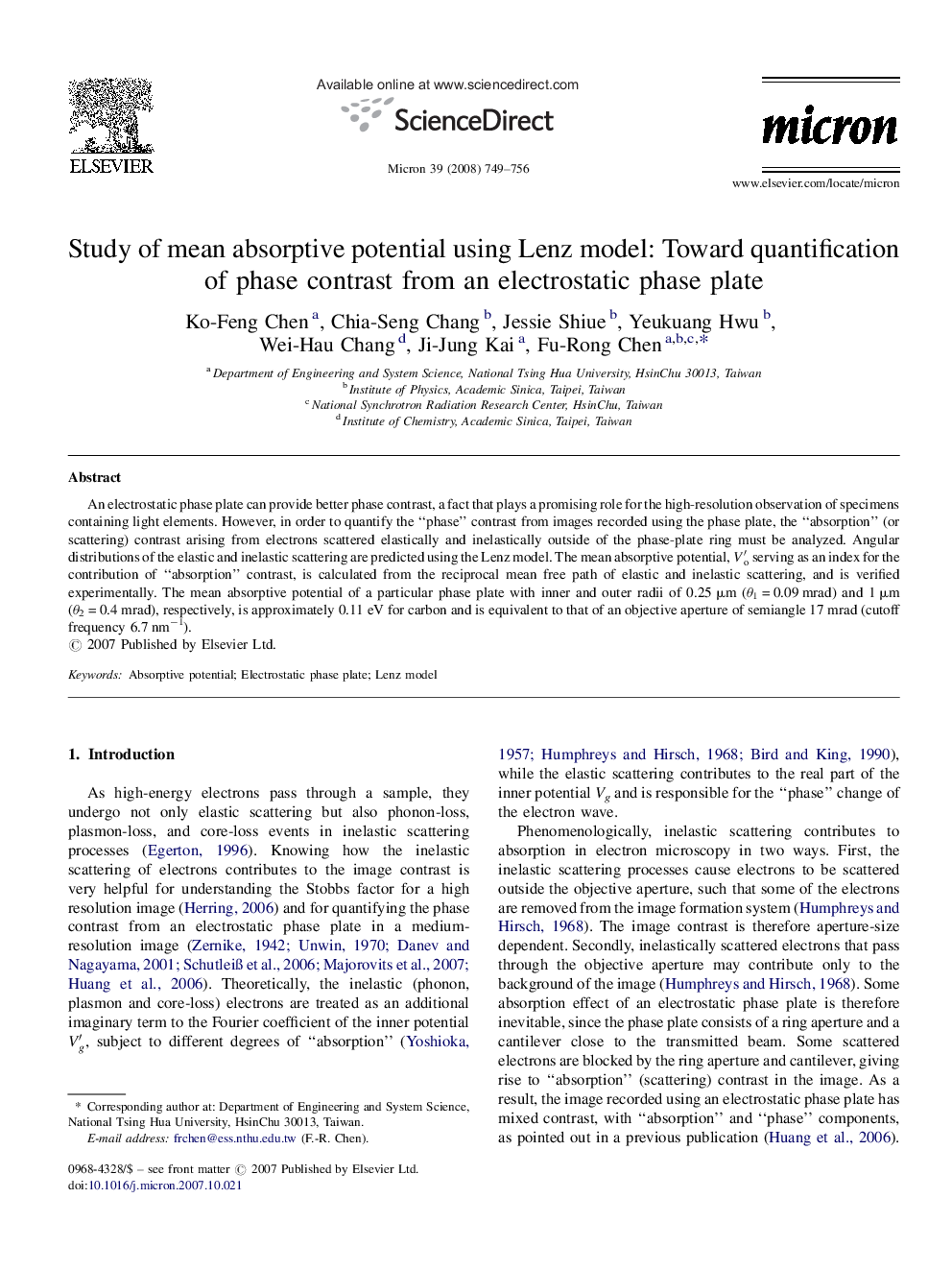| Article ID | Journal | Published Year | Pages | File Type |
|---|---|---|---|---|
| 1589964 | Micron | 2008 | 8 Pages |
Abstract
An electrostatic phase plate can provide better phase contrast, a fact that plays a promising role for the high-resolution observation of specimens containing light elements. However, in order to quantify the “phase” contrast from images recorded using the phase plate, the “absorption” (or scattering) contrast arising from electrons scattered elastically and inelastically outside of the phase-plate ring must be analyzed. Angular distributions of the elastic and inelastic scattering are predicted using the Lenz model. The mean absorptive potential, Vâ²o serving as an index for the contribution of “absorption” contrast, is calculated from the reciprocal mean free path of elastic and inelastic scattering, and is verified experimentally. The mean absorptive potential of a particular phase plate with inner and outer radii of 0.25 μm (θ1 = 0.09 mrad) and 1 μm (θ2 = 0.4 mrad), respectively, is approximately 0.11 eV for carbon and is equivalent to that of an objective aperture of semiangle 17 mrad (cutoff frequency 6.7 nmâ1).
Related Topics
Physical Sciences and Engineering
Materials Science
Materials Science (General)
Authors
Ko-Feng Chen, Chia-Seng Chang, Jessie Shiue, Yeukuang Hwu, Wei-Hau Chang, Ji-Jung Kai, Fu-Rong Chen,
